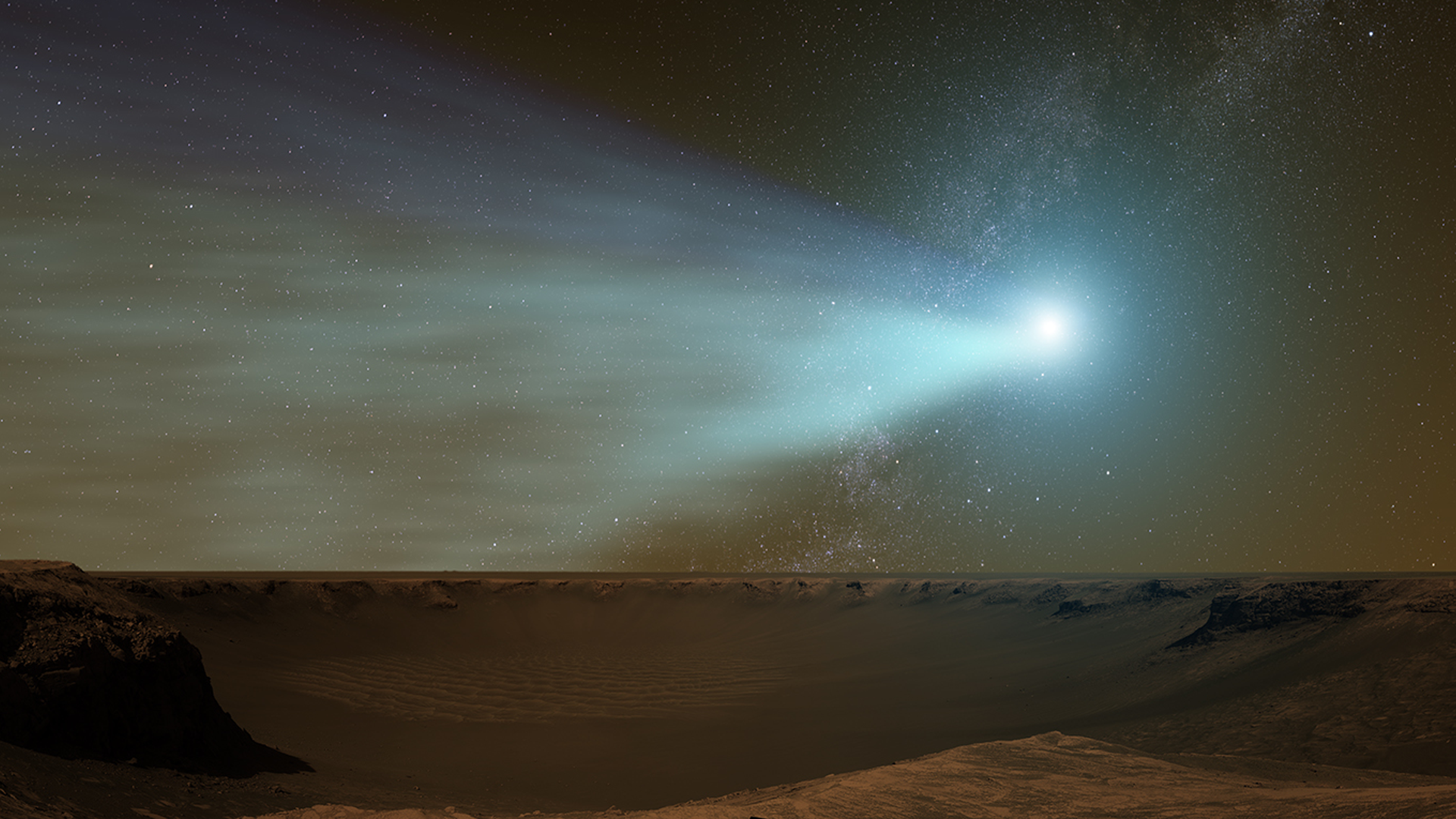Comet Encounter
On October 19, 2014, Comet Siding Spring had a remarkably close encounter with Mars, buzzing the Red Planet at just one-third the distance from Earth to the moon. The comet hails from far beyond Pluto's orbit, originating in a region of icy debris known as the Oort cloud. Comets from the Oort cloud are both ancient and rare. Such comets were born during the formation of our solar system and are older than Earth itself. As Comet Siding Spring passed by Mars, it left behind a trail of gas and dust. Using space and ground-based telescopes, along with NASA’s fleet of Mars orbiters and rovers, scientists will study the composition of the comet and the effects of its gas and dust on the Martian atmosphere. Watch the video to learn more.

An icy visitor drops by Mars.
Astronomers at Australia’s Siding Spring Observatory discovered the comet in
January 2013. Find out more in this video.

This image of Comet Siding Spring was taken in March 2014.

This illustration shows the distance of the comet to Mars at its closest approach on October 19, 2014.

Multiple NASA missions, including the Hubble Space Telescope (above), observed the comet during its Mars flyby.
For More Information
See NASA.gov
Credits
Please give credit for this item to:
NASA's Goddard Space Flight Center
Comet image courtesy of NASA/ESA/Planetary Science Institute/J.-Y. Li
-
Animators
- Greg Shirah (NASA/GSFC)
- Michael Lentz (USRA)
- Walt Feimer (HTSI)
- Ernie Wright (USRA)
-
Video editor
- Dan Gallagher (USRA)
-
Narrator
- Dan Gallagher (USRA)
-
Producer
- Dan Gallagher (USRA)
-
Scientists
- Kelly Fast (NASA/HQ)
- Bruce Jakosky (LASP)
- David Folta (NASA/GSFC)
-
Project support
- Aaron E. Lepsch (ADNET Systems, Inc.)
-
Writer
- Dan Gallagher (USRA)
Release date
This page was originally published on Thursday, October 23, 2014.
This page was last updated on Wednesday, May 3, 2023 at 1:50 PM EDT.

